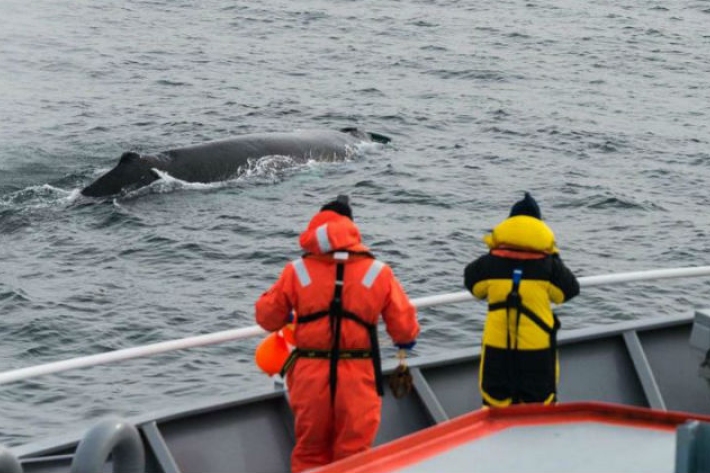-

NIWA scientist honoured for contribution to NZ-France scientific cooperation
News article16 February 2015NIWA marine geologist Dr Geoffroy Lamarche was made a Knight of the National Order of Merit by French Ambassador H.E. M. Laurent Contini, at a special ceremony at the Embassy of France in Wellington on 13 February. -

NIWA's Hotspot Watch
Hotspot16 February 2015Weekly update to help media assess likelihood of extremely dry weather preceding a drought. Regions experiencing severely to extremely drier than normal soils conditions are deemed “hotspots”. -
BLOG: Sir Peter Blake Trust Ambassador Blake Hornblow - tracking blue whales
Blog13 February 2015We have now said goodbye to the towering cliffs and vast glaciers of the Balleny Islands and have been heading southeast tracking blue whales by following their low frequency calls. Yesterday we broke into the polynya that is the Ross Sea. The fantastic weather is following us - making it easy to appreciate this surreal part of the world. -

Critter of the Week: the newly discovered giant Foraminifera
A new foraminiferan has been discovered in moderately deep water (110 metres) northwest of the Bay of Islands in New Zealand. -

NIWA's Hotspot Watch
Hotspot09 February 2015Weekly update to help media assess likelihood of extremely dry weather preceding a drought. Regions experiencing severely to extremely drier than normal soils conditions are deemed “hotspots”. -

Balleny Islands humpback research success
Media release09 February 2015The first objective of the New Zealand- Australia Antarctic Ecosystems Voyage was successfully achieved with the completion of the research at the Balleny Islands. -

BLOG: Sir Peter Blake Trust Ambassador Zac Penman - the Balleny Islands
Blog09 February 2015It’s now day 8 at sea and day 3 at the Balleny Islands. The Balleny Islands are a group of volcanic Antarctic Islands situated at 67 degrees south. They are mostly barren rock, with steep cliff faces and covered by massive glaciers, but they are also home to some incredible marine wildlife! -

Critter of the Week: Epimeria larsi, jewels of the deep
This hot pink gem is Epimeria larsi Lörz, 2009 described by our very own amphipod expert Anne-Nina Lörz and named after her husband Lars! -

BLOG: Sir Peter Blake Trust Ambassador Blake Hornblow - passage into Antarctic waters
Blog04 February 2015On day five at 9:07 am we all held our breath as we passed 60 degrees south. -

Icebergs ahead; Tangaroa enters Antarctic waters
News article03 February 2015Scientists and crew on board Tangaroa are getting their first taste of the deep South’s breath-taking environment as the vessel crosses the 60th parallel, the northern limit of the Southern Ocean. -

New study confirms world's oceans are warming
Media release03 February 2015An international team of oceanographers, including NIWA’s Dr Philip Sutton, has analysed data from ocean-profiling instruments known as Argo floats and found the temperature of the world’s oceans increased steadily between 2006 and 2013.
